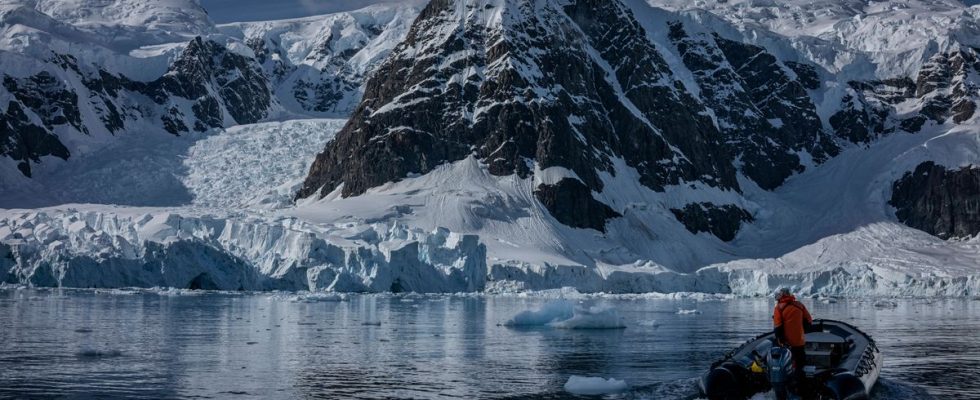It is the “Nasa” map which has this time been released to attack the reality of global warming. In a post widely relayed on Facebook at the start of the year, Internet users questioned the climate emergency based on a poor reading of readings from the famous American space agency.
“‘The Earth is burning,’ says the UN president…” begins this post, with the necessary ellipsis for this type of message. The author of this message copied and pasted by dozens of Internet users then tells us that “the Arctic will start 2024 with almost 1 million km2 more than last year. Antarctica will start with almost 2 million additional km2. » The climate skeptic attack comes next: “And all after the so-called ‘hottest year’ of all time. The warmist sect will have to explain this to us, in a new tinkering of which they have the secret and therefore they have become the high-flying craftsmen. Pure manipulators. »
We must look at the evolution of the size of the sea ice over several decades
The statement is sourced from a reliable site, the NSIDC, a partner of NASA and published by an American university, the University of Colorado Boulder. By going there, we actually see that the sea ice in the Arctic and Antarctic started the year well with an area slightly larger than that of January 2023. However, to realize the reality of global warming, compare two successive years is simply not the right method.
It is over the long term that we note developments, recall several scientists interviewed by 20 minutes. “It is meaningless to compare one year with the one that follows it,” explains François Lapointe, a researcher specializing in the Arctic. It is important to look at the long term. »
2023 saw “record minimum ice in Antarctica”
So, if we place the cursor over several decades, what does the data tell us? Looking at the website of NASA’s partner university, we see that “sea ice is decreasing significantly with each passing decade,” adds François Lapointe.
If we look at the year 2023, “it is on average for the hottest decade ever recorded, 2011-2020,” adds the scientist from the University of Massachusetts Amherst. We can see this perfectly in these graphs:
Last year even saw “the minimum ice record in Antarctica”, adds Aurélien Quiquet, researcher at the CNRS Environmental Climate Sciences Laboratory. For the Arctic, “even if the minimum record of 2012 was not reached”, 2023 presents on average “an extent quite similar to the record year”.
As for the paradox pointed out by the post-climate skeptic – between a year 2023 which recorded record temperatures and an expanding sea of ice at the start of the following year – François Lapointe recalls that “comparing a winter with that of the previous year has little sense. » The specialist emphasizes that “it is not surprising that sea ice can increase in winter. With warming, the melting of glaciers and permafrost will lead to an increase in the supply of fresh water to the Arctic seas. When this water is churned up by powerful cold westerly winds, more ice can form. »
This ice that is forming is “new ice” – and that is very important –, the specialist continues: “What clearly emerges from the data is the disappearance of old sea ice, which is multi-year. » However, the fact that this thick ice is replaced by thinner ice does not have the same effects on the climate or even the ecology of the area. “Younger, thinner ice allows more heat to escape from the ocean into the atmosphere, raising air temperatures in the Arctic. »

